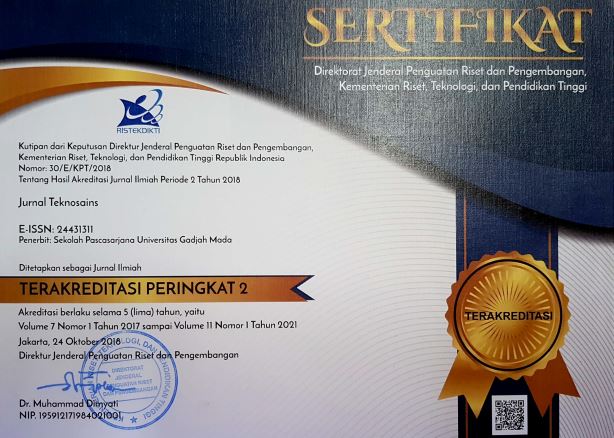ECONOMIC EVALUATION OF POWER WAVES AT THE BEACH TEGAL
Soebyakto Soebyakto(1*)
(1) Pancasakti University
(*) Corresponding Author
Abstract
Observations of electric power of the waves hitting beach Tegal is obtained by finding the value of the speed, frequency and height of the waves on the beach Tegal. The average value of the wave velocity of 0.15 m/s, the average frequency of 0.17 Hz and a maximum height of 0.6 m on average. This data is still too low to generate electrical power from the mechanical power of the waves. We are still conducting research to increase the speed and height of the waves with a method of "Tapered Channel". This method is expected to raise the value of the wave height of 0.5 m to 2.2 m. Waves of electrical power is estimated to rise to 15.4 Watt/m2 25-50 Watt/m2.In economic calculation, the power of the waves starting from the value of the wave power per m2 per 4 m2. If we need a 100 Watt power of the waves, the beach area that required 4 m2. Economic development beach with waves generate electrical power, built outside the port area, so that the fishermen keep doing the fishing business as it should be. Based on the results of research in theory, the power of the waves is the speed of the wave function that describes the linear curve. However, the results of research that has been done show that the power of the waves is a function of the speed of the waves, which described as a hyperbolic curve. Wave power increases with increasing speed of the waves. While the formulation used is the wave velocity is a function of the height of the waves. By using the method of "Tepered Channel" to catch a wave, the wave speed will be higher. The results of economic research to generate electrical waves can be calculated byeconomic aspects of the compute power of the waves and technological aspects by counting the frequency of the waves
Keywords
Full Text:
PDFReferences
Riyadi. A.. 2010. Gelombang Laut Berpotensi Sebagai Energi Listrik. <http://www.alpensteel.com/article/52-106-energi-laut ombakgelombangarus/2181--gelombang-laut-berpotensi-sebagai-energi-listrik.html> [14/03/2010 08:29].
Rahmanta. 2010. Metode Konversi Gelombang Laut. Ocean Wave Energy. <http://www.begokmild.com> [21/11/2010 17:05].
Rwahyuningrum. 2009. Energi Gelombang Laut. <http://rwahyuningrum.blog.uns.ac.id/2009/08/25/energi-gelombang-laut/> [04/02/2011 18:17].
Sutrisno. 1977. Fisika Dasar. Mekanika Jilid 1. Bandung : Penerbit ITB.
Gunawan. T.. 2008. Pemanfaatan Energi Laut 1 : Ombak. Majari Magazine. <http://majarimagazine.com/> [27/02/2010 15:55].
Eko Sarjono. 2012. “Pembangkit Listrik Tenaga Ombak”. <http://www.alpensteel.com/article/51-113-energi-lain-lain/161--pembangkit-listrik-tenaga-ombak-dikembangkan.html>[29/02/2012 21:24].
Oxana. 2010. Daftar Kenaikan Tarif listrik per 1 juli 2010. <http://oxana.blogdetik.com/2010/06/16/daftar-kenaikan-tarif-listrik-per-1-juli-2010/> [21/11/2010 12:35].
Wikimedia. 2010. Analisis Regresi. Wikimedia Foundation. Inc.
Article Metrics
Refbacks
- There are currently no refbacks.
Copyright (c) 2017 Soebyakto bin Soekardi

This work is licensed under a Creative Commons Attribution-ShareAlike 4.0 International License.
Copyright © 2024 Jurnal Teknosains Submit an Article Tracking Your Submission
Editorial Policies Publishing System Copyright Notice Site Map Journal History Visitor Statistics Abstracting & Indexing









